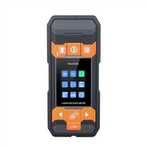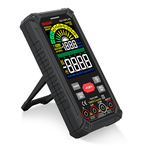Several requirements for maintenance of metallographic microscope instruments
(1) The instrument should be stored in a dry place with good air circulation to avoid overcooling, overheating and contact with corrosive gases. It should not be stored in the same place with chemicals (except desiccant) at the same time. It is advisable to cover with a cover and wipe clean after use. When not in use, remove the sample (glass slide) in time, wipe the lens with lens cleaning paper, turn the lens into a figure-eight position, and lower the lens barrel to fix it to prevent the objective lens from colliding with the lens on the light collector and causing damage. . Then put the microscope into a wooden box and place it in a dry and ventilated place. If possible, it is best to take out the instruments and accessories from the wooden box at regular intervals and on days with good weather, and conduct two or three hours of indoor exposure together in a spacious, dry, well-ventilated place. . After completing operations in hot weather, you should pay attention to the temperature of the storage location. If the temperature difference is large, moisture will be generated on the instrument when stored immediately after use, which may easily cause the instrument to become damp and damaged.
(2) After use, the eyepiece inclined tube should be covered with a dust-proof cover. If there is no dust-proof cover, the eyepiece should also be put on to prevent dust from falling into the inclined tube and affecting the cleaning of the lens holder and optical equipment.
(3) It is not advisable to disassemble and wipe the semi-reflective mirror inside the optical system casually. In addition, if oil and dirt accidentally come into contact with the lens or glass surface, you can wipe it off with a fine linen cloth or clean absorbent cotton dipped in a little xylene (but do not use alcohol to avoid soaking into the inner layer of the lens and affecting the quality), and remove it from the center of the lens. Rotate outwards to wipe, and wipe gently with lens paper or soft silk cloth, otherwise it will be easy to degummed or blurred and affect the detection effect. If there is only dust, you can use a small rubber blower to blow off the dust (do not blow with your mouth), or use a soft brush or a thin wooden stick to roll up cotton and gently erase it. The surface of the lens is coated with a blue light-transmitting film. Do not accidentally wipe it with dirt. It is forbidden to use metal tools instead of cotton swabs to wipe it.
(4) After using an oil immersion objective lens, you must immediately use the above method to remove the oil dirt and wipe it clean. Be careful when wiping it, and be especially careful not to press the mirror surface, otherwise the lens may easily detach from the lens holder.
(5) After long-term use of the instrument, the coarse movement of the slide plate and the sliding part of the stage may be insufficient or dry. At this time, lubricating grease should be added in time. The coarse (micro) moving mechanism should use fluid grease, and the sliding part of the stage should use grease with appropriate viscosity (but be careful not to contain acid).
(6) The inside of the gear box should not be disassembled unless necessary. If it is damaged, you must ask experienced people to repair it to avoid damaging the machine parts.






